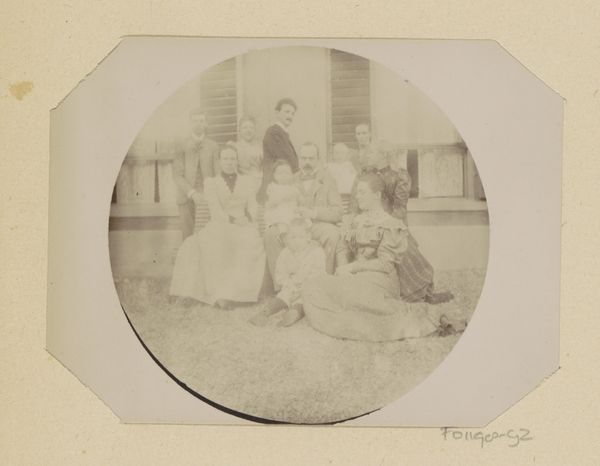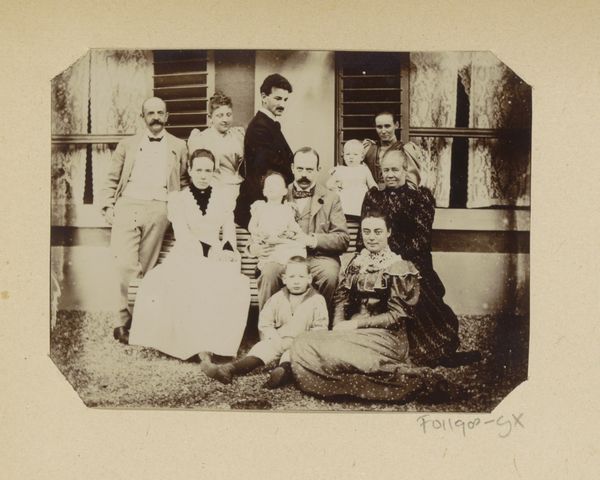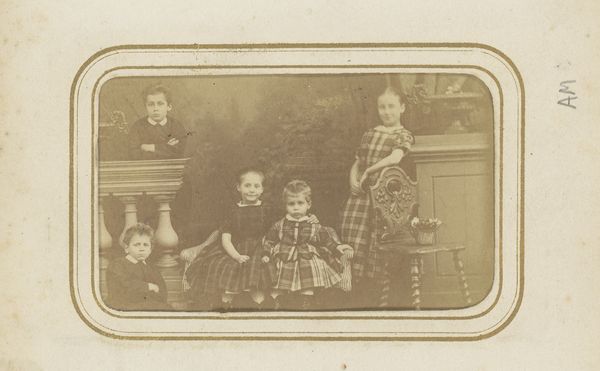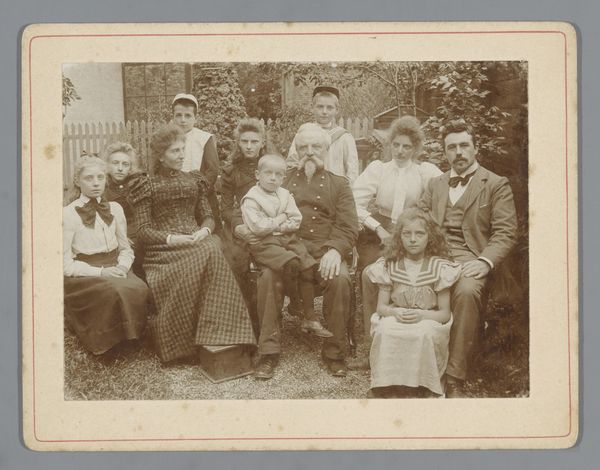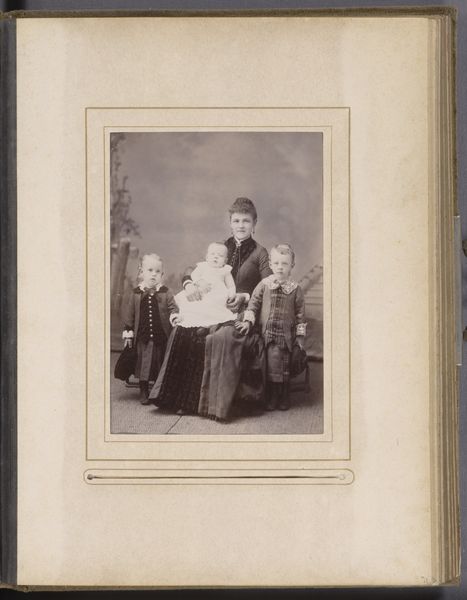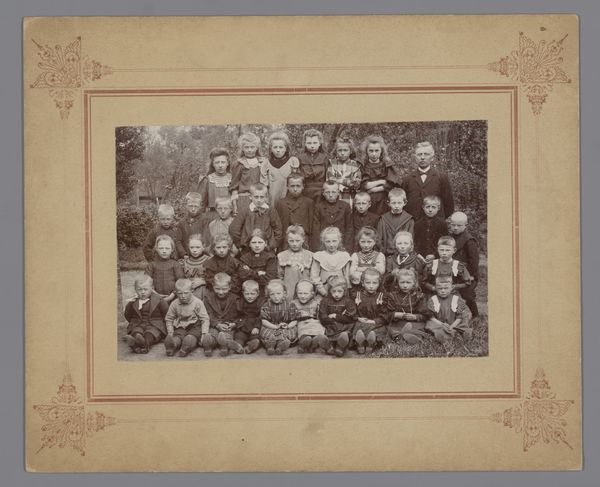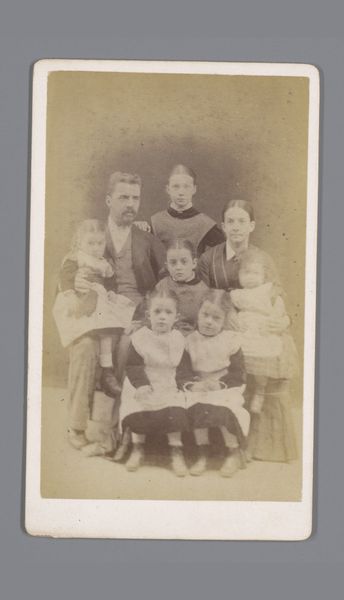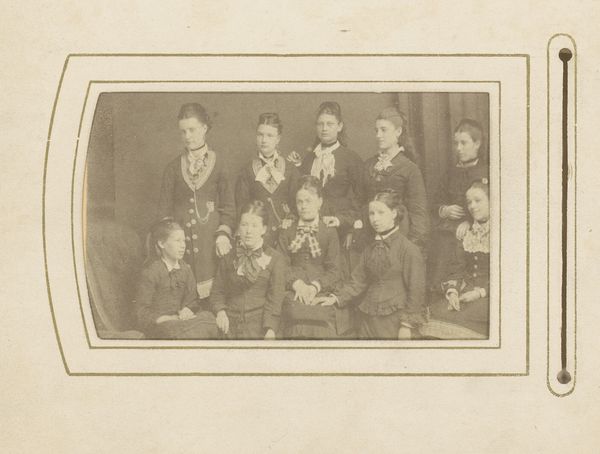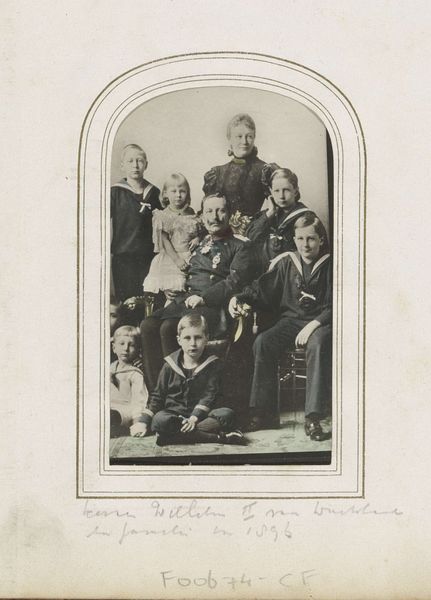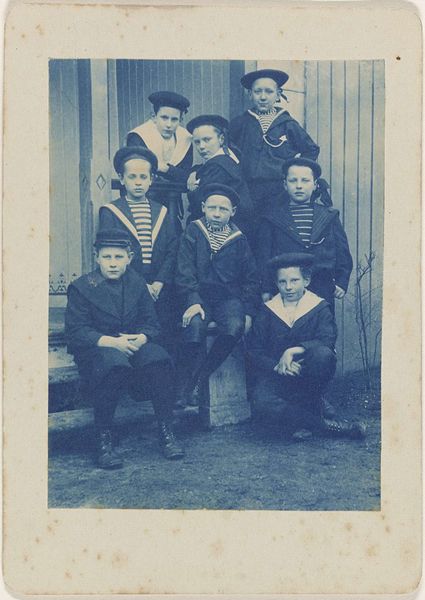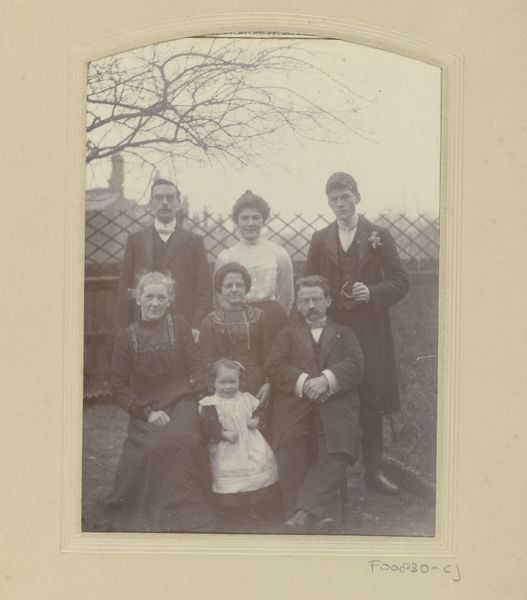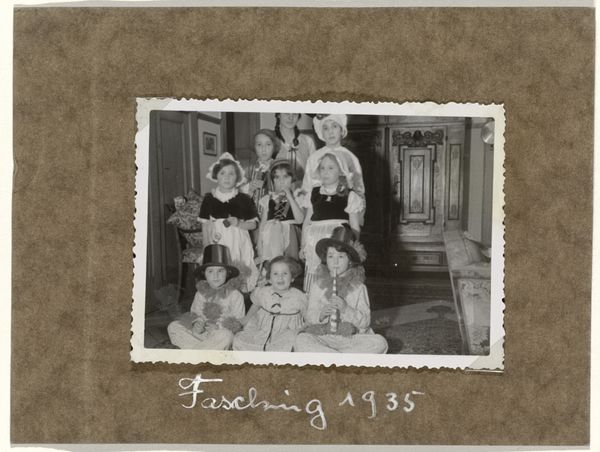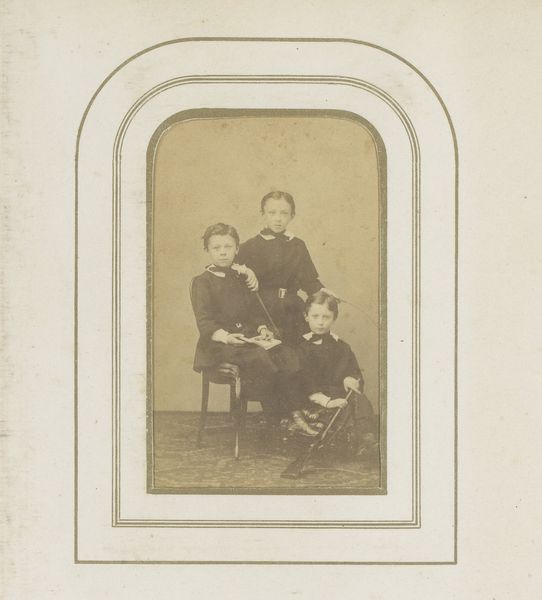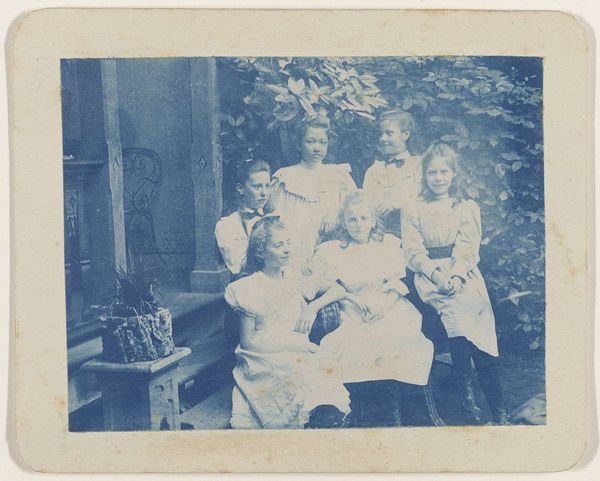
Groepsportret van de familie Piek, v.l.n.r. Willem Frederik Piek Jr., Gesiena Piek, Louise Maria Fellinger, Hendrik Asser, Stephan Piek met onbekend kind, Carl Alexander Piek, Lucia Ottilia Piek, Johanna Piek, Cato Piek en Lucia Piek-Jolles 1891 - 1893
0:00
0:00
photography
#
portrait
#
16_19th-century
#
photography
#
group-portraits
#
realism
Dimensions: height 90 mm, width 125 mm
Copyright: Rijks Museum: Open Domain
Editor: This photograph, "Groepsportret van de familie Piek," was taken between 1891 and 1893. It’s a group portrait of what looks to be a large family. What really strikes me is the formality of the composition, but the photograph itself feels almost…dreamlike with its faded quality. How do you interpret this work through a historical lens? Curator: This image gives us a fascinating glimpse into the aspirations and social positioning of the late 19th-century middle class. Group portraits like this were carefully constructed displays of familial unity and prosperity. Photography, still relatively new, offered a means of democratizing portraiture previously only available to the wealthy. Note the composition—the family isn’t simply posing. Their arrangement signals social hierarchies. Who is centrally positioned, and what might that convey about their status? Editor: It looks like the older family members, probably the parents, are seated in the center, and the children are arranged around them. Would a photo like this have been intended for private use, or would it have had a wider circulation? Curator: Good question. While primarily for personal remembrance, displaying such portraits prominently within the home was common. Think of them as visual representations of social standing, carefully curated for visitors. Also, the realism is noteworthy, demonstrating both a modern interest in a truthful depiction, but equally maintaining the controlled image they hoped to promote. Editor: That makes sense. I guess even snapshots were pretty calculated back then! It really shows how photography was both reflecting and shaping social norms. Curator: Precisely. The very act of commissioning such a portrait reflects a desire to participate in the evolving visual culture and solidify their place within it. What does learning that reveal to you? Editor: It’s a good reminder to consider who is represented in art history, and who isn't, and why. Even a simple family photo can tell us so much about power and representation. Thanks! Curator: Indeed. Every image, regardless of its apparent simplicity, participates in a broader cultural dialogue.
Comments
No comments
Be the first to comment and join the conversation on the ultimate creative platform.
